VIDEOGAMES: a close reading in three parts
By Kieran_ES 0 Comments
So I wrote this last night and then woke up to it this afternoon. Here, you take it.
part i
it is a self-evident truth that, when given the option, those raised on two dimensional video-games will turn right. sit outside any major video-game convention and you will see droves of writers and fans step out into the sun and, on a dime, swivel to the right and bound out of view. they do this because ‘Go Right’ was the first intuited command they ever understood. ‘Go Right’ got them somewhere, ‘Go Right’ got them a princess. it’s a happy practical joke that i would join them.
by 1996, Nintendo’s Nintendo Entertainment System was three years gone. the Super Nintendo Entertainment System had been released and magazines were anticipating yet another console launch, the one that would bring us the highly fetishised addition of 3D graphics. by 1996, I wasn’t aware of any of this. in my wooden tv cabinet, in my South African home, in my purple one story house with a climbing frame out back that i would later learn to my horror that other people Do Not call a ‘Jungle Jim’ in intelligent company, sat my NES. it’s some happy accident, that i still can’t understand, that i had one. i was born in january 1992, seven years after the NES became a thing in north america, and just months before its successor would be released. more than that, the NES wasn’t even released in south africa. see, i lied, the box sitting in my wooden tv cabinet, i would find out much later, was not an NES. it was known as a ‘famiclone’, a knockoff of nintendo’s console designed to play their games. so, somehow, through all the time differences and the supposed illegality of it (my parents were pirating games before i was) i played 8-bit video-games. specifically, i played The 8-Bit Video-Game. i played Super Mario Bros.
***
having been birthed into existence in an excruciating stop and start process which began above the Japanese city of Hiroshima, video-games almost died barely a decade after the umbilical cord had been cut. to go into how and why all that happened is the responsibility of someone with a greater interest in facts or truth in relation to art than i have. it serves this article to simply say that in the desert of New Mexico, USA video-games were buried, and that in the farmland of Japan they were reborn.
the man who dug them up, Shigeru Miyamoto, was The First Genius Of Video-Games. there were geniuses in the video-game industry before him, and there would be geniuses after him but he was the first whose genius pertained specifically to video-games. his Donkey Kong arcade game would take the visual language of the ‘one screen narrative’ that Space Invaders and Missile Command created, and perfected it. at the top sits our antagonist, at the bottom our protagonist. set between them is a continuous series of rolling barrels, obstacles and platforms that all scream a single word: Jump. so you jump.
by the time 1985 and Nintendo’s first major home console had arrived, Shigeru Miyamoto was ready to make a game that took all the narrative and friction and joy of Donkey Kong and package it into a single button press. it was about that single, triumphant action. in Super Mario Bros the jump animation has Mario splay his legs and raise his fist in the air. like he knows how much excitement the contact between your thumb and the round bit on plastic underneath it can generate, so he gives you a little fist pump every time.
maybe i should talk about the game.
***
Mario stands facing the right side of the screen. there are impossibly round, impossibly green hills in the background. there is a perfect sky and a single cloud hanging just out of reach. the opening screen of Super Mario Bros is like an illustrated guide to basic art composition.
“be sure to capture your subject moving into space, not away from it”
and so on. the difference here is that you are afforded the rare opportunity to run headlong into that space. and because our brain is a predictable mess of associations sometimes, that is exactly what the screen is telling us to do. the first world, World 1-1 oddly enough, is an act in demonstrating the basic tenets of the game.
run to the right and you’ll encounter your first goomba, mushroom like little things that waddle towards you with alarming ease. with a genius of the kind that takes your breath away fifteen years later in a tiny Copenhagen flat at 4am, the first two things you see are a) a shiny golden square with a question mark on it, suspended perfectly along the arc of Mario’s jump, and b) a goomba walking its way towards you. you discern the goomba must be an enemy, because it is moving in the opposite direction to you. it is an obstacle and you have to stop it. how? well that’s where the shiny golden box, irresistible to anyone who has ever played a game, comes in. the way it is positioned encourages you to use the second ability you’ve discovered (the first being walking), that jump. so you jump and you hit the box and you get a coin. delicious, sticky, feedback. that moment does something else though. it connects the two elements in your mind, between the jump you just pulled off, and the goomba in front of you. the wide, squishy looking head suddenly look like just another platform to bounce on. so you jump and you land on it’s head, and somewhere thousands of miles away Shigeru Miyamoto smiles. it’s possible that many people on found out about this by jumping for the coin, missing, and landing on the goomba by accident. not at all an accident on the game’s part.
hit the next question mark box and another kind of mushroom will appear, one that is almost unavoidable and clearly signposted as A Good Thing. This is where the fun elements of folklore, or alternatively drug use, lead to a very postmodern moment.
in Disneyland, on Main Street, everything is built to a 5/8ths scale. when you walk through the gates and enter a small, midwestern Main Street of the late 19th century, your surroundings appear untouched by time. you might not notice, but there isn’t any garbage, or anything that might point towards anything but the ideal they are presenting. but the primary, subconscious, trick of Disneyland, is of being physically seized. from the dull, empty, repressive, postmodern urban environment of Anaheim, we have been released into a ‘familiar’ world of which we are masters. in Disneyland, you grow in stature. not just physically, but in a sense of place and inclusion. here is an easily understood world where you feel dominant and free. it’s the most powerful illusion Disney have. on Main Street, you are enlarged and situated, leading almost to a collective nostalgia for childhood.
in Super Mario Bros, that first mushroom acts in a similar way. the enlargement of Mario, the seizure of him and situating of him in this now scaled down world, changes our perspective. Mario is dominant. he is in a space that appears nostalgically sentimental, cute and defiantly suggestive of an imagined childhood running through fields outside your house. this is emphasised by the next element of the level design. continue right and you’ll encounter a series of progressively taller pipes sticking out of the ground. as well as introducing you to an important element of the game, the four pipes explore and explain Mario’s jump. the first requires nothing more than a hop - a tap on the button. the next is insurmountable with just a single tap, so you hold the button and .. and suddenly the future of millions of people was decided. the ‘floaty but not quite loose’ holdjump is miraculous. it’s like a superhero jumping a building, and descending in complete control. you go from one pipe to the next, extending your jump to its limits. to really drive home the joy of controlling those 4 jumps, there’s another little obstacle after the pipes: a small gap in the floor. you could hop over it, but you don’t. you fly over it, because it’s a victory lap. it’s Shigeru Miyamoto nodding at you.
there is one more lesson left before Super Mario Bros’ ‘tutorial’ ends. hop over the gap, hit the next question box (as you’re wont to do by now) and collect the flashing flower. Mario is now endowed with a projectile weapon, a fireball attack that kills anything that it hits. jump again and run along the top set of bricks (you’ve never been this high and it’s just sitting there, of course you’re going to!), letting loose your new fireballs and you’ll notice yourself speeding up. you’ll pitch off the end of the platform, hit the perfectly placed goombas and lose all your newfound power. maybe. if you didn’t do that, well done. but it is certainly A Way that was intended, because suddenly, after feeling the most powerful You Have Ever Felt, you are sucked out of Disneyland and dumped back into Anaheim. you are small. all you have is your jump. and your jump is all you need, it turns out. your jump will always be there. so cherish it.
as gorgeously designed as Super Mario Bros’ levels are, it wouldn’t mean anything if not for the mind-numbingly intense amount of effort put into the tiniest moments. the jump is timed to the exact, perfect millisecond that would offer the greatest satisfaction. it hangs long enough to impress a sense of importance, and drops quickly enough to form a snappy rhythm that wastes nothing.
and that turn, oh that turn
***
i lied again. though perhaps by now you’re used to it. see, although the Stylish Intro holds some truth, it is a lie. it is a lie because it should go like this: it is a self-evident truth that, when given the option, those raised on two dimensional video-games will turn right. and then left. and then right. sit outside any major video-game convention and you will see droves of writers and fans step out into the sun and, on a dime, swivel to the right and bound out of view. look for long enough and you will see these people plant their right foot down, twist their bodies around 180 degrees and continue in the opposite direction. usually with a look of deep dissatisfaction on their face. they do this because as biologically imperative the knowledge that they should ‘Go Right’ once was to them, even more important is the desire to capture their Original Joy. turning left in Super Mario Bros., after building up a head of steam going right, results in this perfect moment of video-game joy. Mario grinds to a halt, flips to face the other way, kicks up his leg, swings his arms and sticks there for just the right number of milliseconds. it’s ludic beauty. i like to assume Shigeru Miyamoto spent a year perfecting the jump animation and a year perfecting the turn animation in a white room, on a blank level in the game. and everything else just fell into place.
modern video-games have thrown away their lineage of Totally Sick Joyous Turning Animations because modern video-game designers aren’t Shigeru Miyamoto circa 1984. modern video-game designers build inwards instead of outwards. Shigeru Miyamoto, for all his failures, always designed outwards. he found a core action, honed it until it shone like a gift from heaven, and then offered it unto the people. in fact, Original Joy isn’t far off of what the two primary actions in Super Mario Bros. could be called. They are gaming’s Original Sin. the moment we partook of the forbidden fruit of Totally Sick Joyous Turning Animations and could never go back to a time before that moment. Shigeru Miyamoto may have offered us Super Mario Bros as a gift, but we took it greedily without truly understanding its lesson. and modern video-game designers continue to suffer because of it.
so the people who grew up on Shigeru Miyamoto’s gifts will continue to turn right, and then left and then right. because the last game that delivered on the promise of Super Mario Bros is always too far away in the wing mirror, and the next one is never quite over the horizon. you might see them pump their fist at a convention, when they’re playing the newest Mario game, and walk away with empty eyes - like they’ve lost something and can’t remember where they last left it.
***
i used to think that my dad has some secret life of video-games before i came along. to me, it explained the long past its relevancy NES, and the games we had for it. it was fun to imagine dad playing the games i played, doing the things i did and pumping his fist when he jumped. this is probably not the case. or, if it is, he has kept it a secret much better than i would expect of him. what i remember though is sitting next to him, passing the controller back and forth, as we tried (i’d like to say once a week, every Sunday, but that would be too fictional even for this outrageous essay) to complete Super Mario Bros. years later he would pick up a controller again. we would pick a team from the respective list of football clubs (he would inevitably be Man Red, i would inevitably be Merseyside Red) and Pro Evolution Soccer 5 would entertain us for an hour or two. i don’t know if he even remembers playing Super Mario Bros with me. i don’t even know if it happened. a lot of what i take to be fact is simply a cosy little dream that my mind has cobbled together from half-remembered moments long ago. i like to think that those afternoons were real, whether they happened or not.
***
it’s at this point that i should probably admit that i haven’t played more than a few levels of Super Mario Bros since 1998. all my memories of the game are flashes of clarity in mostly muddy conjecture. yes, i owned Super Mario Bros. yes, i spent afternoons sat on the floor, controller in hand, as i tried to beat the game. yes, i have gone back to it since. i would play it for an hour, marvel at it once again, and set it down at roughly the point my memory becomes most unsteady. after World 1-4, there are moments i recognise and plenty i don’t. whether i beat the game and rescued the princess is a mystery to me.
eventually my NES clone would break. we would take it in to the store, a place i remember as three walls lined with grey nintendo cartridges and towering plastic bins of games, to get it fixed. the clerk would stare at the thing blankly. he would say that there was nothing he could do about it. it was likely a decade old at this point, and something the clerk had maybe only heard about. i was standing surrounded by the literature of the moment, great walls of the ‘newest and greatest’ video-games being produced, and the little box that contained worlds and joy and multitudes to me was irrelevant plastic to him. i would cry, my dad would take me home.
so now i’m sitting in the middle of a foreign city, in a bed that i don’t own, writing this in the cold glow of my laptop. and i can’t sleep because i drank too much coffee, or i am so obsessed with the act of getting this down that my body won’t let me go until i say it all. so i click on the icon that i’ve been staring at when not looking out and wondering why the apartment across from me has its lights on at 4am. the one with the file name ‘Super Mario Bros..nes’. why i’m awake in Copenhagen at 4am, playing Super Mario Bros is the same reason i turn right. it’s the same reason i still play games and it’s the same reason that when i ask myself if being twenty-one is any different from being six, i say no. being eighteen was different. being twenty was different. now, i am essentially the same person i was fifteen years ago because the act of pushing a button can make me involuntarily pump my fist. it can make me smile. and that’s dumb. but so are video-games, yet i still call them the art form of the times. Super Mario Bros is a pop-art gem you see on the side of a wall, it was the first chords of punk music you ever heard, it was the first and only religious experience that made sense to you. it was the button press that spawned a million more.

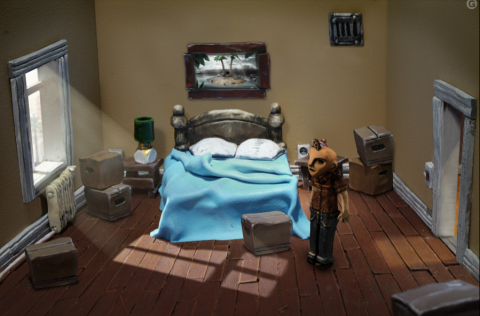
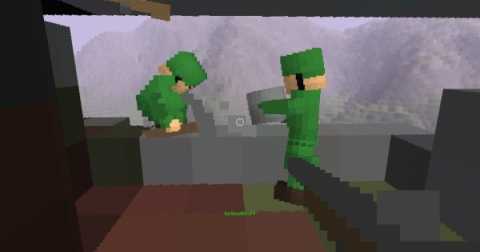

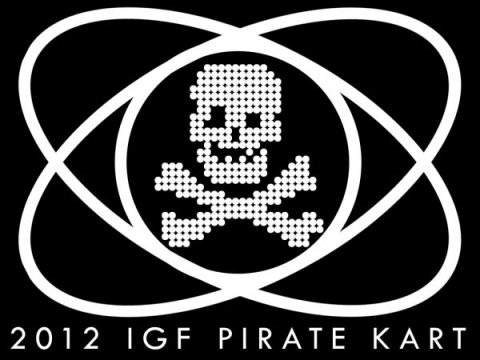
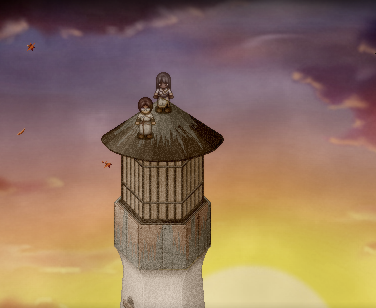
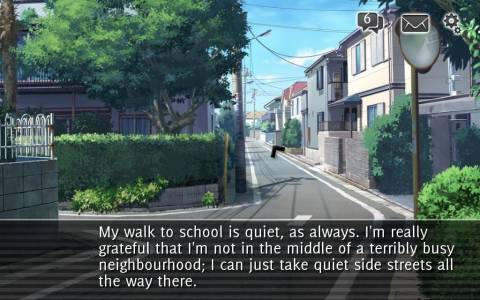
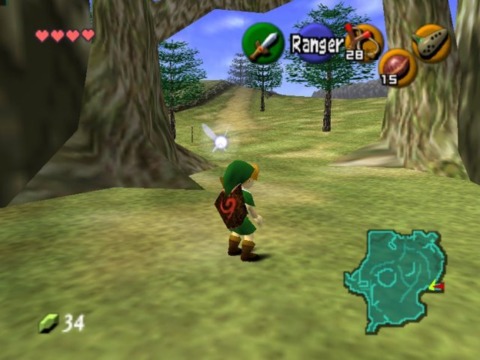
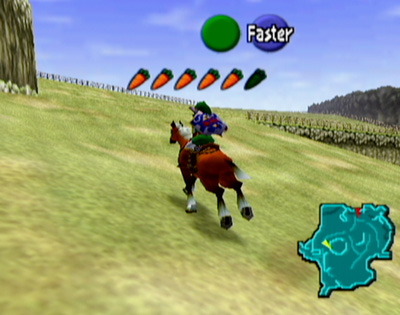
Log in to comment